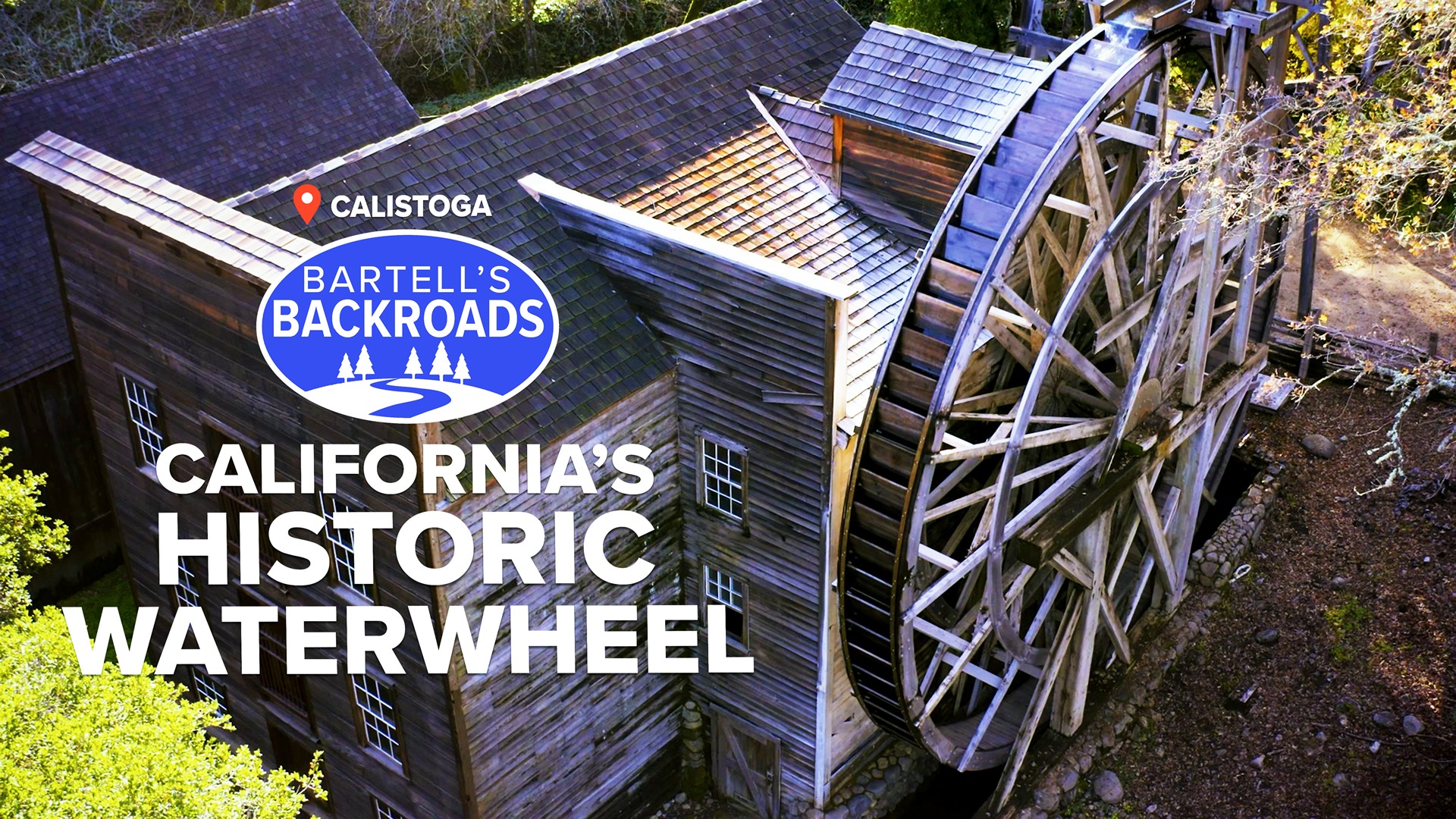CALISTOGA, Calif. — Before the internal combustion engine and electric motors were widely in use, it was the waterwheel that powered many early machines. If you head to wine country in Calistoga, you can see one in action.
Standing at 36 feet tall and turning at a speed of about six revolutions a minute is California’s oldest working water-powered grist mill.
“A grist mill is used to grind grain into flower,” said Robert Grassi.
He is one of the many care takers at the Bale Grist Mill State Historic Park in Calistoga. His official title is historic millwright, a title few people in the world hold, and for good reason.
“This is what I’ve been into since I was a kid but there is not a lot of money made doing it, so I do a lot of other jobs. This is a part-time passion of mine,” said Grassi.
It's his job to keep the wooden water wheel and all its moving parts in working order. It is not an easy task. The historic mill was built in 1846 by a mysterious man by the name of Dr. Edgard Turner Bale.
“We really don’t know a lot about him. There wasn’t a lot written about him,” said Grassi. “The mysteriousness about him is the fact we don’t know much, and he died young.”
What we do know is that Dr. Bale was an English Army doctor hired by General Vallejo before California became a state.
“He ended up marrying Vallejo’s niece and becoming a Mexican citizen, then getting a land grant up here,” said Grassi.
Shortly after Bale got a Mexican land grant and had the grist mill built, the gold rush started and Bale got gold fever.
“He went to the gold fields, got sick and came back and died,” said Grassi.
Bale’s wife ran the mill after he died in 1849. Then, in 1925, the mill became a historic landmark. Since then, the mill has been repaired and restored a number of times so tourists could see what it was like to grind grain like it was done in the old day.
“The shelf life of modern flour can be years, but back then it was only months so that’s why they had to come back to the mill as often as they did, typically every few months,” said Grassi.
Today we know Napa Valley as wine country, but during the gold rush, it was the breadbasket of California.
“During the gold rush there was a lot of mouths to feed, and the price of flour went way up,” said Grassi.
The giant thinly spaced rock grinder makes quick work of turning the hard grain to powder. Gravity is the work horse at the mill and it’s pretty powerful. The weight of the water turns the wheels, powers belts, spins wood gears and creates lots of flour.
“When they were working, they could produce upwards of 900 lbs. an hour,” said Grassi.
Watching mill work is like stepping back in time. Tours of the grist mill happen most weekends. For schedule times, visit the Bale Grist Mill State Historic Park website.
Watch more from ABC10: Hit the backroads for some wintery holiday fun | Bartell's Backroads

















